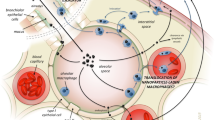Abstract
Objectives: Biopersistence, or alternatively, biodegradability (i.e., low biopersistence) represents an important concept in fibre toxicology. The studies described below were undertaken to investigate the mechanisms through which inhaled para-aramid (p-aramid) respirable, fibre-shaped particulates (RFP) are biodegraded in the lungs of exposed rats and hamsters; in contrast, cellulose fibres, another organic fibre-type, are known to be biopersistent. To investigate the mechanisms of RFP biodegradation, we have hypothesized that lung fluids activate p-aramid RFP following deposition, and the RFP are then vulnerable to enzymatic attack in the lungs. Methods: To test the hypothesis, p-aramid RFP or cellulose RFP were instilled into the lungs of rats and the lungs digested 24 h postexposure using two different digestion techniques: (1) a conventional ethanolic KOH method, and (2) an enzymatic method which simulates lung enzymes. Results: The enzymatic but not the KOH method artificially cleaved the p-aramid RFP recovered from rat lungs. Next, p-aramid RFP or cellulose RFP were incubated with saline or lung fluids and then processed by one of the two digestion techniques. Mean lengths of p-aramid RFP processed with KOH and evaluated by SEM were 13.4 μm; in contrast, mean lengths of p-aramid RFP samples, incubated in lung fluids and treated with the enzymatic method were 8.8 μm. The enzymatic digestion method had no discernible effect on shortening of cellulose RFP, indicating that the results with p-aramid were specific. Conclusions: Our data indicate that components of lung fluids coat and catalyze the p-aramid, thereby predisposing the RFP to enzymatic cleavage. This could play a significant mechanistic role in facilitating the transverse cleavage or shortening of inhaled p-aramid RFP in the lungs of exposed rats and hamsters.
Similar content being viewed by others
Author information
Authors and Affiliations
Rights and permissions
About this article
Cite this article
Warheit, D., Hartsky, M. & Webb, T. Biodegradability of inhaled p-aramid respirable fibre-shaped particulates: Representative of other synthetic organic fibre-types?. Int Arch Occup Environ Health 73 (Suppl 1), S75–S78 (2000). https://doi.org/10.1007/PL00014630
Issue Date:
DOI: https://doi.org/10.1007/PL00014630




